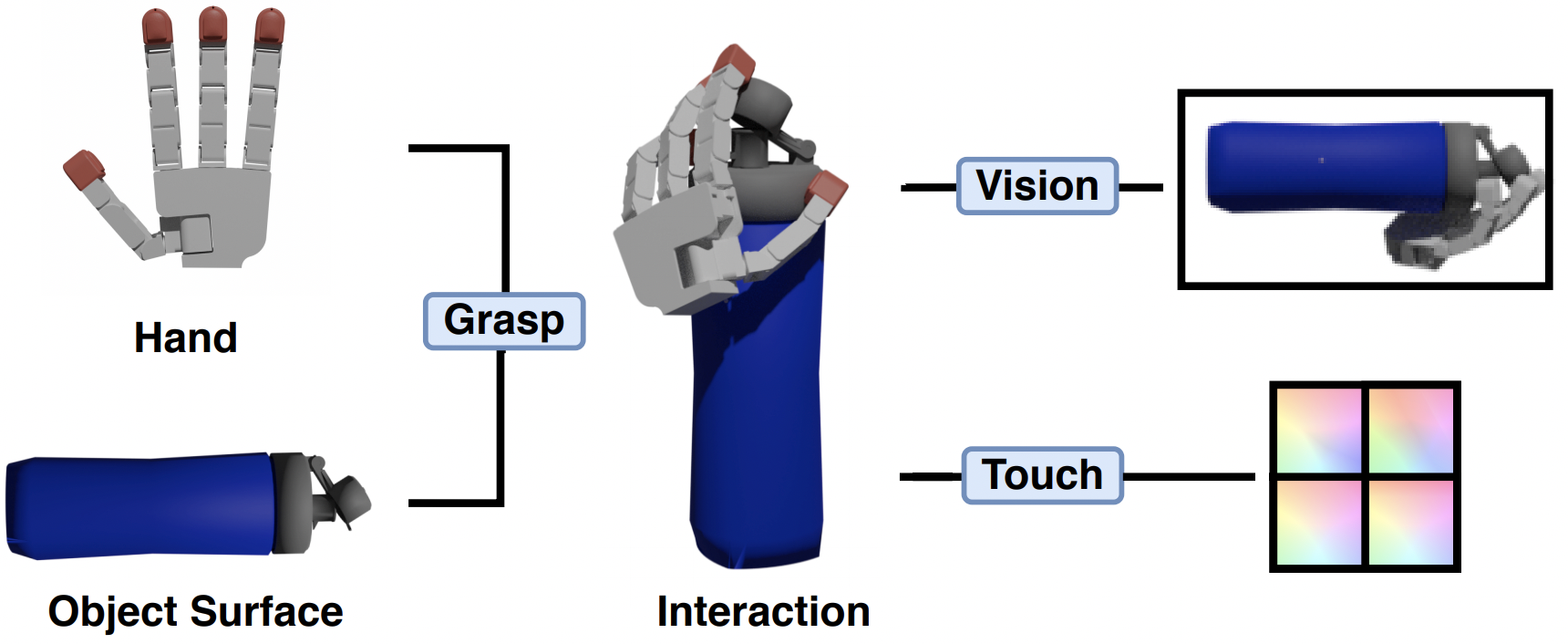3D Shape Reconstruction from Vision and Touch
When a toddler is presented a new toy, their instinctual behaviour is to pick it upand inspect it with their hand and eyes in tandem, clearly searching over its surface to properly understand what they are playing with. At any instance here, touch provides high fidelity localized information while vision provides complementary global context. However, in 3D shape reconstruction, the complementary fusion of visual and haptic modalities remains largely unexplored. In this paper, we study this problem and present an effective chart-based approach to multi-modal shape understanding which encourages a similar fusion vision and touch information.To do so, we introduce a dataset of simulated touch and vision signals from the interaction between a robotic hand and a large array of 3D objects. Our results show that (1) leveraging both vision and touch signals consistently improves single-modality baselines; (2) our approach outperforms alternative modality fusion methods and strongly benefits from the proposed chart-based structure; (3) there construction quality increases with the number of grasps provided; and (4) the touch information not only enhances the reconstruction at the touch site but also extrapolates to its local neighborhood.
PDF Abstract NeurIPS 2020 PDF NeurIPS 2020 Abstract

